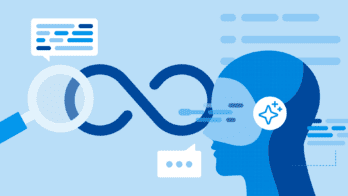Experience observability 2.0 with Honeycomb. Get your free account.
Many businesses rely on cloud infrastructure to power their software solutions. The cloud today makes it easier than ever to create services and components, increasing the complexity of software. With more and often smaller processes, cloud-native architectures have driven the need for better insights into our software—a way to look into how these processes fit together. To accomplish this insight, we use an approach that goes beyond traditional monitoring and provides deep insights into system behavior. This approach is cloud observability.
What is cloud observability?
Cloud observability is the practice of understanding the internal state of a system by examining telemetry it generates. Unlike traditional monitoring, which tends to focus on predefined metrics and thresholds, cloud observability offers a more comprehensive view. It enables engineers to detect when something goes wrong or slows down, why it went wrong, and how to prevent it in the future.
There are several elements to cloud observability that can help us achieve these goals, but first let’s discuss the differences between observability and monitoring.
Cloud observability vs cloud monitoring
Cloud observability and cloud monitoring may seem interchangeable, but they serve distinct purposes. Monitoring is more reactive, focusing on identifying and alerting teams when performance issues arise based on preset metrics and assumptions about the system. It answers the question, “Is my system healthy?”
On the other hand, observability is proactive and investigative. It allows engineers and developers to explore beyond the surface-level symptoms, digging into the why and how behind performance anomalies. This deeper understanding enables teams to predict potential failures and address issues before they disrupt the user experience.
Elements of cloud observability
Here are the elements of cloud observability.
Logs
Logs are granular records of events that provide timestamped information about what actions/operations happened within a system during a particular time. For logging best practices, logs should be structured. In cloud environments, log aggregation is critical for managing logs across distributed services. These aggregated logs can help pinpoint the root causes of issues.
Metrics
Metrics provide measurable data that help engineers track performance trends over time. In cloud systems, application metrics like throughput, error rates, and latency offer quick snapshots of system health and infrastructure metrics like CPU/memory usage can indicate if a service is correctly scaled and sized. An observability platform can aggregate these metrics and visualize them in real-time dashboards for continuous monitoring. Honeycomb aggregates these metrics from logs and traces so you don’t have to store them separately.
Traces
Traces provide key information on how our system’s components connect to each other. Traces follow a request’s lifecycle as it travels across various system components. With cloud-native applications composed of microservices, distributed tracing follows a request throughout the distributed architecture, providing critical context for understanding interactions between services, bottlenecks, or performance issues.
Application performance monitoring (APM)
APM tools play a key role in cloud observability by aggregating data and making it available for interaction in real-time. This insight empowers teams to continue developing their cloud-native solutions with the confidence that they can understand and troubleshoot their systems.
How to beeline observability to the cloud
If you want to succeed with a cloud-native solution, invest in a strategy that involves observability so that as your system grows in complexity, it remains sustainable for further software development.
You can use this list of best practices to set up observability for your cloud systems and infrastructure.
- Define key metrics and logs: Identify the metrics you can derive from your logs. For your cloud application/system, establish a baseline for performance so you can recognize any system anomalies or performance deviations.
- Use OpenTelemetry: OpenTelemetry enables effective observability. You can leverage distributed tracing across your microservices to track and understand important user requests with OpenTelemetry libraries.
- Set up alerts and automated responses: Configure alerts for critical thresholds and conditions. Where possible, trigger automated responses to remediate undesirable conditions so that systems can quickly recover.
- Promote cross-team collaboration: Encourage a culture of observability among engineers, operations, and business stakeholders. This means software developers should look at their metrics, logs, and traces to see how their code is operating in production.
In a cloud environment, observability allows for real-time visibility into distributed systems, whether they consist of serverless functions or exist as several components across multi-cloud infrastructure. Observability helps us to analyze performance, identify bottlenecks, and optimize cloud-native applications.
The future of observability
Observability is becoming increasingly important for incident management, system reliability, reduced downtime, and enhanced user experiences. The future of observability is built on OpenTelemetry and moves many people away from the more traditional look at observability as three pillars: logs, metrics, and traces—also known as observability 1.0. You can read more about observability 1.0 vs 2.0.
As cloud technologies evolve and scale, so too will the tools and techniques for achieving full-stack observability. For those interested in diving deeper into observability best practices and tools, check out Honeycomb’s guide on key observability components or explore our observability maturity model.









